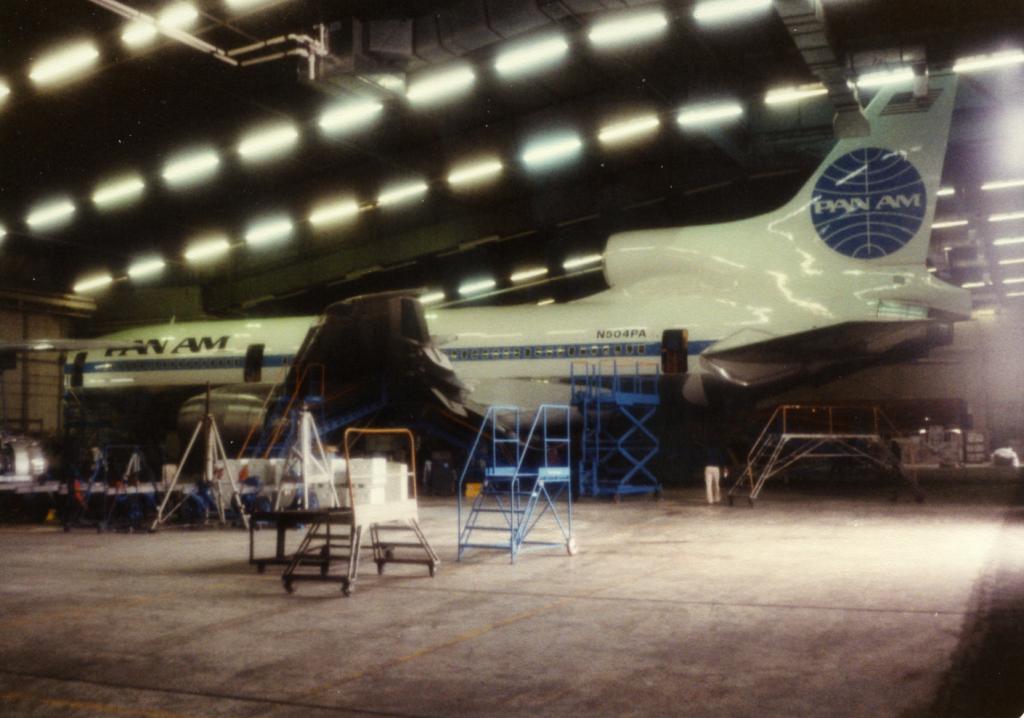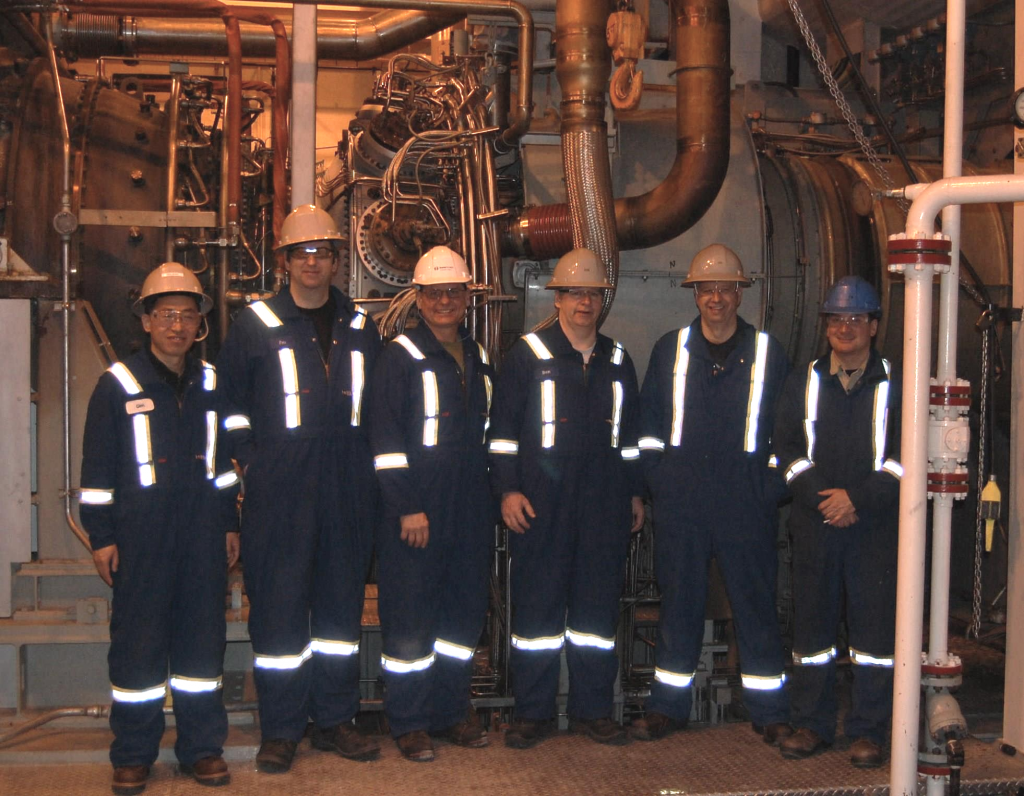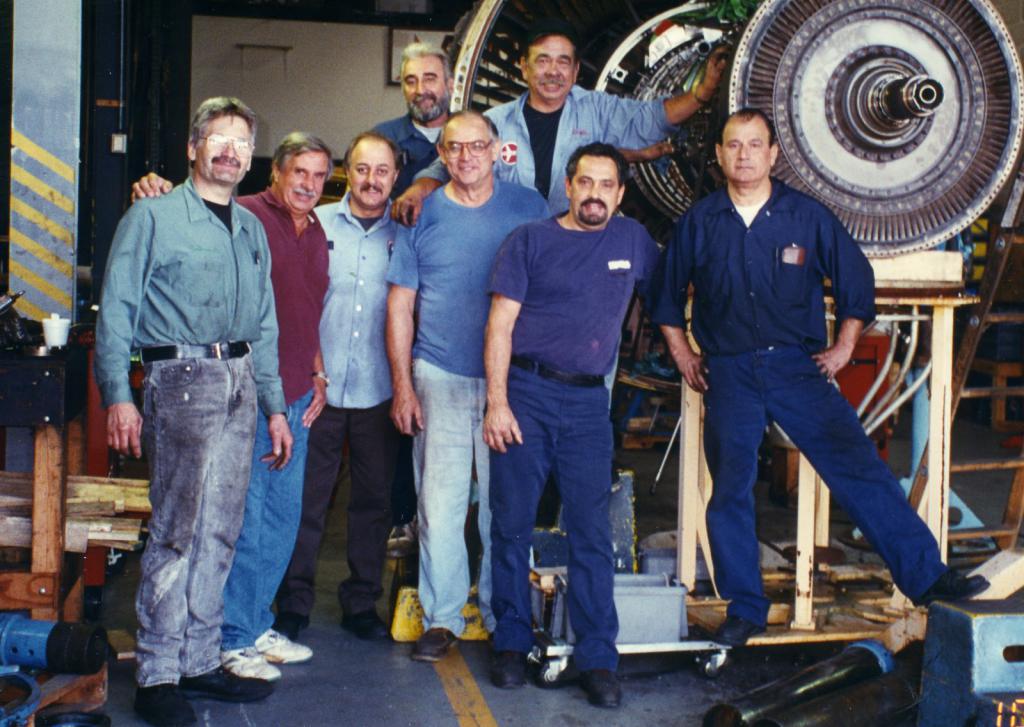
|

|
Forum Index : Microcontroller and PC projects : What are the "big boy" Microcontrollers for?
| Author | Message | ||||
| PeteCotton Guru Joined: 13/08/2020 Location: CanadaPosts: 316 |
Thanks Paul for the interesting info. Were you working in Rolls-Royce? If so, you may know one of my brothers - he was working on the Trent in the late 80's/early 90's. These are industrial RB211's - not air fleet. TransCanada Turbines have a test cell at YYC, but last time I checked it was still running the Rolls-Royce control system. Our units are installed on the TransCanada Pipeline as compressors (bleed some fuel gas out of the pipeline - and hey presto - power). As for the GMT+10. That must be a default for the forum, I'm actually GMT-6 (Alberta)  Edited 2021-04-30 08:16 by PeteCotton |
||||
| PeteCotton Guru Joined: 13/08/2020 Location: CanadaPosts: 316 |
Paul has already answered this, but to provide some extra perspective. We once had to troubleshoot an RB211 that was surging everytime it shutdown. It turns out that the culprit was a physical relay in the circuit that was delaying the bleed valve opening by somewhere around 5 to 10 milliseconds. This almost blew the engine up. That is the sort of response times we are talking about - there is absolutely no room for an operating system. This why Allen-Bradley can charge $25K for a PLC that is less powerful than a $25 Raspberry Pi. There are also other factors, such as guarantee of availability of spare parts, resiliance to extreme temperatures if the HVAC fails etc. The simple fact is that if you are paying $50 million to install a Gas Turbine Compressor Station, you're not going to worry about saving $50K on hardware costs. Edited 2021-04-30 08:23 by PeteCotton |
||||
vegipete Guru Joined: 29/01/2013 Location: CanadaPosts: 1082 |
I'm a bit surprised that there would be a physical (mechanical?) relay involved in a control that is sensitive to a few milliseconds. We had something similar many years back with some canning line equipment. Ejecting single cans was sensitive to 60 Hz AC line frequency. The kick-out system was fast enough that its performance depended on where in the AC waveform the signal was fired. Those tests failed and we had to stick with DC solenoids. Keep those PCs with OSes away from timing critical tasks! Visit Vegipete's *Mite Library for cool programs. |
||||
| PeteCotton Guru Joined: 13/08/2020 Location: CanadaPosts: 316 |
It was an aftermarket "hack", added (in series) by an operator who wanted an alert if the engine tripped.... definitely not part of the original Rolls-Royce design. Edited 2021-04-30 08:58 by PeteCotton |
||||
| Tinine Guru Joined: 30/03/2016 Location: United KingdomPosts: 1646 |
Real-time Windows has been around for decades and is as reliable as any embedded system. We developed our own VxD driver in the 90s and boy did we put it through the wringer before releasing it. Hundreds of big-ticket machine tools were shipped, primarily to OEM auto industry. I am seeing more and more of Beckhoff in manufacturing. These are the same guys who created EtherCAT. Stability and real-time capability Beckhoff has been using Windows operating systems as a stable basis for the TwinCAT automation software for many years. Only tested driver and software components that are regularly subjected to intensive real-time and functional tests are integrated. The drivers used are optimally matched to the Beckhoff hardware. In addition, all settings in the operating system are adapted to the use of TwinCAT. This optimizes the real-time capability of the controller and minimizes downtime on the machine. Beckhoff IPCs |
||||
| Volhout Guru Joined: 05/03/2018 Location: NetherlandsPosts: 3555 |
@Tinine, I have worked with Beckhoff PLC's. And as far as I understood what they do: they live BESIDES windows. Not IN windows. They only use multicore processors, and claim one complete hardware core from the CPU Windows. Windows is just the GUI and peripherals (monitor, SD card, keyboard, normal ethernet). The core they claim does the real time etherCAT stuff, not interrupted by Windows. And yes, it is reliable, and FAST... Volhout PicomiteVGA PETSCII ROBOTS |
||||
| Tinine Guru Joined: 30/03/2016 Location: United KingdomPosts: 1646 |
I have worked with Beckhoff PLC's. And as far as I understood what they do: they live BESIDES windows. Not IN windows. They only use multicore processors, and claim one complete hardware core from the CPU Windows. Windows is just the GUI and peripherals (monitor, SD card, keyboard, normal ethernet). The core they claim does the real time etherCAT stuff, not interrupted by Windows. And yes, it is reliable, and FAST... Volhout Yeah, our VxD contained our real-time code and the processor time was then released to Windows and snatched back again when needed. Other systems create their own HAL that coexists with the Windows HAL. Point being is that it's not totally fair to write Windows off just because one's own desktop PC is flaky.  |
||||
| thwill Guru Joined: 16/09/2019 Location: United KingdomPosts: 3848 |
Many thanks for all the interesting insights. Best wishes, Tom Game*Mite, CMM2 Welcome Tape, Creaky old text adventures |
||||
| Paul_L Guru Joined: 03/03/2016 Location: United StatesPosts: 769 |
I am bewildered by your location (GMT+10) in western Canada and your requirement to test run RB211s. I know that Air Canada uses RB211s on AirBus and Boeing twin engine aircraft but I thought that their main base maintenance was located at Toronto YYZ although they do have a hub at Vancouver YVR. Have you constructed a test cell or are you running them outdoors? Thanks Paul for the interesting info. Were you working in Rolls-Royce? If so, you may know one of my brothers - he was working on the Trent in the late 80's/early 90's. These are industrial RB211's - not air fleet. TransCanada Turbines have a test cell at YYC, but last time I checked it was still running the Rolls-Royce control system. Our units are installed on the TransCanada Pipeline as compressors (bleed some fuel gas out of the pipeline - and hey presto - power). As for the GMT+10. That must be a default for the forum, I'm actually GMT-6 (Alberta)  No, not Rolls-Royce, I worked for Pan Am for a third of a century. The only Rolls-Royce engines we had were on the L1011s where we inherited orders that had been placed by National and Eastern. We had 87 B747, 236 B707, 36 DC8, 42 B727-100, and a bunch of B737 for the Logan/JFK shuttle, all of which used P&W engines. I never would have imagined that you would need anything as powerful as RB211's to pressurize a pipeline! I know that big turbines are used for off peak electric power generation, but I presumed that the reason was that they can be started and stopped very quickly. I see that the first 24MW RB211 was installed in 1974 at TransCanada PipeLines's Burstall compressor station in Saskatewan and that TransCanada now has 40 RB211s in service. There are now 79 industrial RB211s operating in Canada. One of your RB211s on the pipeline has reached 187,000 hours!!!! WOW, we though we were lucky if aeronautical engines accumulated 30,000 hours on a wing before overhaul. I suspect that pipeline service is not very demanding. It looks like most of your engines are not asked to produce more than 32 MW. In aeronautical service on the 747 the RB211 will have to produce up to 65 MW at takeoff power settings. You learn something new every day. It seems very obvious now that if you're pressurizing a gas pipeline you would have s limitless fuel source right there in the pipe. Natural gas would also be very much easier to control than Kero-A1 and you wouldn't have the perpetual problem of controlling fungus growth in the fuel supply. I would have no way of knowing your brother. Rolls-Royce has no major facilities anywhere near New York. As to the L1011, this is the way I usually got to see them. Paul in NY  |
||||
| CaptainBoing Guru Joined: 07/09/2016 Location: United KingdomPosts: 1985 |
LOL Maxwell and Newton never had to factor-in fungus! Who'd have thought  |
||||
| Paul_L Guru Joined: 03/03/2016 Location: United StatesPosts: 769 |
You try landing an aircraft in Bangkok and loading fuel without acquiring a half ton of fungus!! It's not a good idea to have all four engines shut down over the South China Sea when the fuel filters plug. We had a dozen biochemists around the world trying to find interesting methods of killing fungus. Paul in NY |
||||
| CaptainBoing Guru Joined: 07/09/2016 Location: United KingdomPosts: 1985 |
I can imagine! your post was the first I had heard of this (and I work in the ATI although on the IT side, so no excuses really). Lead to a very interesting canter on the subject and it seems it's a big concern for diesel suppliers too. |
||||
| Paul_L Guru Joined: 03/03/2016 Location: United StatesPosts: 769 |
The other big surprise with fuel comes when you descend rapidly into a tropical environment with a lot of stored fuel remaining in the tanks and land. The 747-200 can easily land with 200,000 pounds of unburned fuel. At 40,000 feet altitude that fuel will be cooled to about -40F in 30 minutes of flight. The aircraft can easily descend from 40,000 feet to sea level and land in under 15 minutes. If your destination happens to be POS, (Piarco, Port of Spain, Trinidad), in July you can anticipate a temperature of 95F with a relative humidity of above 90% on the ground. When the POS atmosphere vents into the fuel tanks upwards of 100 gallons of water will instantly sublimate, (turning directly from vapor to ice crystals), into the cold kerosene and sink to the bottom of the tank where the ice crystals will accumulate and block the fuel intakes. There have been numerous instances of engines shutting down due to fuel starvation after a quick descent and immediate landing at a tropical airport while the aircraft is still taxiing to a gate. That's always fun for the passengers when the APU, engines, lights and ventilation stop abruptly and the aircraft coasts to a stop on a taxiway and everybody gets to wait for a tug to come out and tow the dead aircraft to a gate! Then maintenance has to wait for the ice crystals to melt, suck the water and the sludge which formed in the bottom of the tanks and the fuel lines and pumps when the kerosene and water mixed and the fungus and bacteria sat down to dinner. Kerosene, in large quantities, does not have an appealing smell. When you combine it with this sludge it is horrible. And people think aircraft maintenance is a nice, clean, desirable job! Paul in NY |
||||
| JohnS Guru Joined: 18/11/2011 Location: United KingdomPosts: 3661 |
O M G. But sooo interesting :) John |
||||
| PeteCotton Guru Joined: 13/08/2020 Location: CanadaPosts: 316 |
One of your RB211s on the pipeline has reached 187,000 hours!!!! WOW, we though we were lucky if aeronautical engines accumulated 30,000 hours on a wing before overhaul. I suspect that pipeline service is not very demanding. It looks like most of your engines are not asked to produce more than 32 MW. In aeronautical service on the 747 the RB211 will have to produce up to 65 MW at takeoff power settings. It's also not such a big deal if one of our units loses efficiency (or even stops)  Quite a different story for an aircraft! Quite a different story for an aircraft!Yeah, the pipelines are huge and there can be 30 or 40 kilometers between stations, so the mass of gas being moved is very substantial. This means that everything has a huge latency - so they do things nice and slow. Sure, in theory you can crank that unit up to full power in no time, but you're not really gaining anything by doing it (and you're sending a shockwave down the pipeline) - it's still going to take 4 to 6 hours of running at full power to pressurize the next section of pipeline - and guess what - you're now sucking down on the previous section of pipeline, so that upstream engine is going to have to work harder to keep that section flowing. Once you have the gas flowing, all of the units should be able to idle (or even shutdown) and just let the mass of the gas do most of the work. It's the "getting it moving" bit that really takes time. Also, because there is a maximum operating pressure for each section of the pipeline (otherwise it will burst), then you usually can't actually bring an engine up to full power, as it will over-pressurize the downstream line. So if we are testing a unit we have to leave it off overnight so that the downstream section of pipeline drains right down, to give us the spare capacity to have some good full power test runs the following day. And finally we have the weather. We have often been testing in the winter and Gas Control (who control the whole pipeline network) just refuse to let us shutdown because the demand for gas is so high. So we just have to sit around and wait for the message that we can test... which is a shame - as you know they push a tonne of power when it's -40C outside! Edited 2021-05-04 06:41 by PeteCotton |
||||
| PeteCotton Guru Joined: 13/08/2020 Location: CanadaPosts: 316 |
Our crew (I'm the tall one) and one the RB211's.  |
||||
| Paul_L Guru Joined: 03/03/2016 Location: United StatesPosts: 769 |
You guys dress a LOT better than our guys used to. This is a typical overhaul and rotor balance crew with a P&W JT9 on a transport cradle with the final turbine stages removed. Our publicity people used to get very upset when a picture like this escaped into the wild. I used to slip a pair of white coveralls over my suit when I had to go down there and poke around an engine's sensors. Paul in NY  |
||||
| PeteCotton Guru Joined: 13/08/2020 Location: CanadaPosts: 316 |
Paul in NY Excellent picture! Yeah - TransCanada is really strict on health and safety. If you don't have fire resistant overalls etc. they absolutely will not let you out on the plant. Every morning we had a security brief about how we were going to evacuate etc. All vehicles are left unlocked, pointed at the gates, with their keys in the ignition in case we have to vacate the premises in a hurry. They're more relaxed at their test facilities etc. but once you are on a live gas plant they get very serious about it. Edited 2021-05-04 07:43 by PeteCotton |
||||
| Paul_L Guru Joined: 03/03/2016 Location: United StatesPosts: 769 |
Well, if the pipeline diameter is 36 inch and the length between compressors is 20 miles you would have a volume in the pipe of about 750,000 cu ft. Air at one atmosphere and 74F would have a density of about 0.08 lb/cu ft. Natural gas would have a density of about 0.04 lb/cu ft. If the pipeline is pressurized to 10 atmospheres the natural gas density would be about 0.4 lb/cu ft. The mass of natural gas in the 20 mile length segment would be about 300,000 pounds! That would present an enormously reactive load for the compressor to deal with! There would be an exponential velocity curve with a time constant of above 3 hours to deal with! Paul in NY |
||||
| PeteCotton Guru Joined: 13/08/2020 Location: CanadaPosts: 316 |
Well, if the pipeline diameter is 36 inch and the length between compressors is 20 miles you would have a volume in the pipe of about 750,000 cu ft. Air at one atmosphere and 74F would have a density of about 0.08 lb/cu ft. Natural gas would have a density of about 0.04 lb/cu ft. If the pipeline is pressurized to 10 atmospheres the natural gas density would be about 0.4 lb/cu ft. The mass of natural gas in the 20 mile length segment would be about 300,000 pounds! That would present an enormously reactive load for the compressor to deal with! There would be an exponential velocity curve with a time constant of above 3 hours to deal with! Paul in NY I am impressed with your maths! I had to do a quick conversion into metric but the values you are using are close (1.2 meters - so about 48 inches), but they're pressurised from about 5000 Kpa to 8000 Kpa (depending on the section) - which is 50 to 80 atmospheres. So yeah - there's a lot of mass moving along the pipeline. It's crazy to think of gas as having any significant weight but under these pressures it really is a huge mass to either start moving or to stop! |
||||